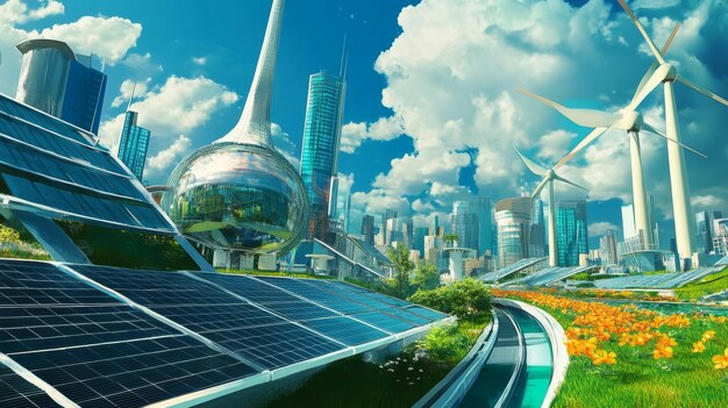From Fossil Fuels to Clean Energy: New Opportunities for U.S. Energy Investment
The U.S. is at a turning point in its energy history. The transition from fossil fuels to clean energy is accelerating, offering both significant opportunities and challenges for investors. As the global focus shifts toward sustainability, the U.S. is making notable strides in clean energy investments, driven by policy support and advancements in technology.How can investors seize the opportunity?

The Rise of Clean Energy Investment
In 2024, global energy investment is expected to top $3 trillion, with nearly $2 trillion going toward clean energy. In the U.S., clean energy investment now outpaces fossil fuel spending by a ratio of about 1.4:1, signaling a major shift in priorities. The U.S. accounts for 15% of global clean energy investment, and this share continues to grow.
Since 2020, clean energy investments in the U.S. have surged from $200 billion to $280 billion by 2023. This boom is fueled by government policies like the Infrastructure Investment and Jobs Act and the Inflation Reduction Act. These laws provide significant funding to support solar, wind, electric vehicles (EVs), and other clean energy projects.
Technology Driving Cost Reductions
Advancements in renewable energy technology have made clean energy more affordable. For example, the cost of solar power has dropped by over 80% in the last decade, and wind energy has also seen significant price reductions. Large-scale production and technological improvements have made these options more competitive than ever before. A key example is the Solar Energy Generating Systems in California’s Mojave Desert, which has shown how large-scale solar projects can generate energy at a lower cost than traditional coal plants.
Battery storage technology is also improving, allowing for better integration of renewable energy into the grid. The U.S. Department of Energy has funded multiple projects to increase storage capacity, which is critical for managing energy from intermittent sources like solar and wind.
Government Policies Fueling Growth
U.S. policy is playing a big role in speeding up the clean energy transition. The Inflation Reduction Act of 2022 provides $370 billion in funding for clean energy projects, while the Infrastructure Investment and Jobs Act allocates $550 billion for clean energy and infrastructure development.
These investments are designed to improve energy security, reduce carbon emissions, and create jobs. In fact, the clean energy sector is one of the fastest-growing job markets in the U.S. The Texas Wind Boom is a good example, where wind energy projects have created tens of thousands of jobs in the state, turning it into a leading producer of wind energy.
Fossil Fuel Investments Still Significant
While clean energy investment is growing rapidly, fossil fuels still play a critical role in the U.S. energy landscape. In 2024, the U.S. is expected to invest around $1 trillion in oil and gas. This continued investment in fossil fuels is partly due to short-term energy security needs and the fact that fossil fuels remain a significant part of the global economy.
However, this dynamic is slowly changing. For instance, large energy companies like ExxonMobil and Chevron are starting to diversify their portfolios by investing in carbon capture technologies and renewable energy projects, recognizing that the future lies in cleaner energy.
Opportunities and Challenges Ahead
As the U.S. continues to ramp up clean energy investments, there are still obstacles to overcome. One of the biggest challenges is the outdated grid infrastructure, which struggles to handle the influx of renewable energy. Additionally, storage technology needs further development to store intermittent energy for longer periods.
Another challenge is the high upfront cost of clean energy projects, especially in developing markets. Although costs are coming down, the initial investment remains a barrier for some regions, slowing the global energy transition.
Despite these challenges, the shift from fossil fuels to clean energy presents massive opportunities. U.S. investors are well-positioned to benefit from this transition as policies and technologies continue to evolve.
In conclusion, the U.S. energy landscape is changing rapidly. The transition from fossil fuels to clean energy is not only essential for addressing climate change, but it also offers substantial economic opportunities. As clean energy investments grow, the U.S. is on track to lead the global energy transition.
